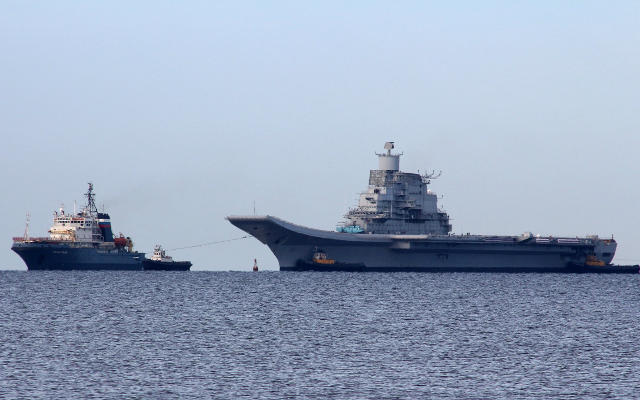India: Budding Blue-Water Navy Capabilities
Matthew Rolfes / Sean LaBar /
India’s recent acquisition of the Russian-made aircraft carrier INS Vikramaditya demonstrates its desire to increase its naval strength. Building a blue-water navy suggests that India is seeking to project both force and influence in the Asia–Pacific and hedge against China’s growing sphere of influence and continued naval buildup.
India’s newest carrier joins the INS Viraat to form the foundation of India’s carrier fleet. The Vikramaditya is expected to be operational through 2018. At this point, the nation’s second aircraft carrier, the Viraat, is tentatively scheduled to be decommissioned. Coincidently, 2018 is also when India is scheduled to complete its first indigenous carrier, the Vikrant.
Recently, Indian Rear Admiral Atul Kumar Jain, flag officer for the Eastern Naval Command, stated that it was India’s intention to have a 200-ship navy within the next 10 years. This is certainly an ambitious goal, though it is likely unattainable, considering India currently maintains a fleet of 24 principle surface vessels and 15 submarines.
As important as these carriers will be in projecting its “Look East” policy, New Delhi is working to ensure a comprehensive naval transformation. In addition to increasing the size of its fleet, India will also acquire Boeing P-8I maritime reconnaissance and anti-submarine aircraft and a new naval communications satellite while continuing with the indigenous production of naval vessels and critical naval infrastructure in the Indian Ocean.
India’s naval buildup will help maintain a stable balance of power in the region. In testimony delivered before the House Subcommittee on Asia and the Pacific, Heritage’s Walter Lohman, director of the Asian Studies Center, stated:
India’s “Look East” policy…is in America’s interest. To the extent it complicates Chinese efforts to further extensive maritime claims in the Western pacific, it is also positive. India’s measured naval engagement and commercial interests in the South China Sea serve as useful political statements limiting Chinese ambitions.
Lohman further noted that the Indian navy is “perhaps the most strategically minded part of the Indian establishment.”
As India’s navy continues to grow, the U.S. should recognize India’s growing size, strength, and national power and promote Indian involvement in regional and maritime security operations. New Delhi has the potential to set a positive example for the region by demonstrating that naval power comes with the expectation of promoting peace and freedom on the high seas.
Matthew Rolfes and Sean LaBar are currently members of the Young Leaders Program at The Heritage Foundation. For more information on interning at Heritage, please click here.

